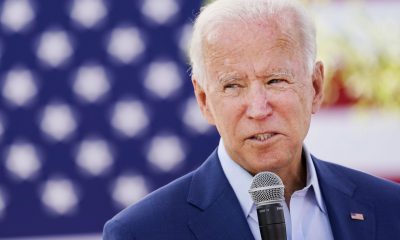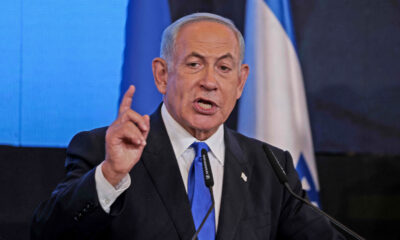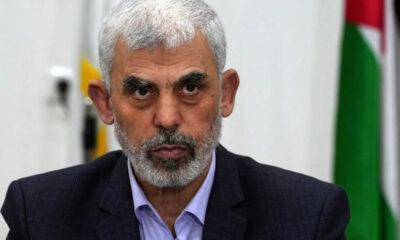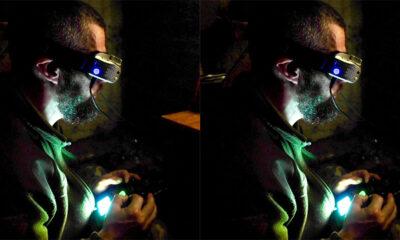International
Russian forces pull back from Kyiv, exposing horrors of war

Ukrainian troops recaptured territory around Kyiv on Saturday as Russian forces pulled back from towns they had seized in the opening days of the war and left in their wake scenes of destruction and horror, including the abandoned bodies of dead civilians.
Journalists entered the town of Bucha, a suburb northwest of the capital, and saw numerous corpses strewn on the streets. Video posted to social media and verified by The Washington Post showed what appeared to be at least nine dead, including one child.
Bucha’s mayor, Anatoly Fedoruk, said in an interview that around 270 local residents had been buried in two mass graves. He estimated that 40 people were lying dead in the streets. Some had been bound and executed — shot in the back of the head, he said.
The mayor added that officials are worried that the bodies could be booby-trapped with explosives. In a video address to Ukrainians early Saturday, Ukrainian President Volodymyr Zelensky said Russia was “mining the whole territory.”
“They are mining homes, mining equipment, even the bodies of people who were killed,” he said. The Post has not verified those claims.
Revelations of atrocities and alleged war crimes, including reports of soldiers firing on civilian protesters in the east, cast a pall over what has in some ways been a hopeful period for Ukrainians as they resist the Russian invaders.
The capital appears safe for the moment, but at the same time, shelling and intense fighting in the east and south of the country are continuing. Efforts to rescue civilians in besieged cities have been slowed by the extremely dangerous conditions on the ground.
The war, in its 38th day, remained a grinding conflict with no clear resolution in sight. The Russian strategic pivot may foreshadow a long war of attrition. That would prolong the already severe humanitarian crisis in which millions of Ukrainians have fled their homes, becoming refugees in neighboring countries.
A cease-fire in the largely destroyed coastal city of Mariupol has been in place for several days, creating a corridor to leave the city. A team from the Red Cross failed to reach the city Friday or Saturday, citing the unsafe environment. A Red Cross spokesperson emailed a note with few details saying that teams are en route but have yet to reach Mariupol.
READ ALSO:
- Foreign investors indicate interest in National Theatre as renovation gulps $100m
- Bola Ige: Soyinka tackles Buhari over Omisore selection as APC national secretary
- Abuja mosque Chief Imam suspended for criticising Buhari
Western military analysts are still trying to interpret the decision by Russian military commanders to reposition their forces. Russian officials have said they are concentrating their forces in the eastern part of the country. The repositioning could signal an intense battle for control of the Donbas region. It appears that, at least for now, Russian President Vladimir Putin has recalculated what he can and can’t achieve with his invasion of Ukraine.
Ukraine’s deputy defense minister, Anna Malyar, said late Saturday that the entire Kyiv administrative region is fully under Ukrainian control.
Zelensky had said earlier that the movement of Russian forces was “slow but noticeable.”
But he continued his ongoing appeal to allied nations to do more to aid his war-scorched country. He cited the suffering in Mariupol, where tens of thousands of residents have been trying to survive amid the rubble.
“Europe has no right to react in silence to what is happening in our Mariupol. The whole world must react to this humanitarian catastrophe,” Zelensky said in his video address.
Zelensky’s demand for help came amid significant battlefield developments that potentially could alter the geography of the war.
If, as some Western analysts believe, Putin focuses on expanding his control of territory in the east, it would open a broad corridor between Russia and the Crimean peninsula annexed by Russia in 2014. But a more limited strategic goal could undermine support within Russia for the war effort.
But after Moscow’s negotiators agreed in talks with Ukraine to de-escalate the fighting around Kyiv and Chernihiv, and focus instead on the eastern Donbas region, propagandists and pro-war politicians expressed dismay. Prominent state television anchor Vladimir Solovyov said Thursday that “that any negotiation with the Nazis until the boot is on their throat is weakness. You shouldn’t shake hands with this creep,” he said, apparently referring to Zelensky.
Another pro-Kremlin journalist and blogger Semyon Pegov, from the outlet War Gonzo, which reports from the Russian side of the war, said the invasion was just beginning and that Russia would continue “to the end.” He called Russian soldiers “real Russian heroes.”
“No one and nothing will take away their feat from them,” he posted to Telegram on Friday. “It’s already gone down in history.”
As part of their retreat, Russian forces abandoned an airport seized at the start of the invasion. Near the border with Belarus, Ukrainian forces regained control of the disabled Chernobyl nuclear power plant that had been attacked and captured by Russian forces. The national flag once again was raised over the plant.
The repositioning of troops so far has been relatively modest and is possibly a tactic to fool the Ukrainians into lowering their defensive posture in the capital, Brookings Institution defense analyst Michael O’Hanlon said Saturday. He added the Russians may be hoping that Zelensky reveals his whereabouts.
“If they can get the Ukrainians to lower their guard, that would be for them potentially an opportunity to make a strike against Zelensky and/or his inner circle and the top tier of the government,” O’Hanlon said. “I still think there’s a possibility that they’re trying to lure the Ukrainians into making a mistake.”
READ ALSO:
- No governance exists in Nigeria anymore – Jega
- Train attack: NRC says 21 passengers still missing, 170 safe
- TRANSFERS: Ronaldo, Coutinho in race for big moves
On-and-off negotiations for a broad cease-fire have been on again in recent days, but the sincerity of the Russians at the table has been questioned by their Ukrainian counterparts. They fear, as do security analysts in the West, that Russian gestures toward a cease-fire and a negotiated peace could be a diversion to help the attackers reposition their forces after the initial thrust of the invasion yielded disappointing results.
According to Ukrainian media reports, David Arakhamia, the head of the Ukrainian delegation to the talks, said officials are preparing for a possible meeting between Zelensky and Putin in Turkey.
Ukrainian presidential adviser Oleksiy Arestovych told national television that Ukrainians should prepare for “difficult fights” ahead in Mariupol and in the southern and eastern regions of the country.
In the east, four people were “injured and severely burned” after Russian forces fired mortars at protesters in a city near Zaporizhzhia, the site of a nuclear plant that Russia captured last month, according to Ukraine’s human rights ombudswoman.
Residents of Enerhodar, a satellite town of Zaporizhzhia, which has been occupied by Russian forces for nearly four weeks, held a rally in support of Ukraine on Saturday. Russian soldiers used light and noise grenades to disrupt the protest and opened mortar fire on residents, the ombudswoman, Lyudmyla Denisova, said in a statement posted to Telegram.
“Such treatment of civilians is a crime against humanity and a war crime as defined by the Rome Statute of the International Criminal Court,” Denisova said.
The Washington Post verified two videos recorded by witnesses and posted to Telegram. The images were filmed at the same time from separate angles and show at least nine flashes followed by large booms. Gunfire is audible as people run away from the site of the protest.
“There is a fight in the city center!” a man yells in a third video, verified by The Post, while rushing away from multiple loud booms. “Russian occupiers attacked civilians. There was a peaceful protest here.”
Tens of thousands of people in recent weeks have fled Ukrainian cities under attack by Russian forces after Kyiv and Moscow agreed on fragile evacuation deals.
Across Ukraine, seven humanitarian corridors have been established, according to Ukrainian Deputy Prime Minister Iryna Vereshchuk, including the one from Mariupol. She said in a Telegram post that more than 6,000 people were evacuated from front-line cities to other parts of the country on Friday.
Vereshchuk said those evacuees included more than 1,400 people who left in their vehicles along planned routes from the southern cities of Berdyansk and Melitopol, which are under Russian control, to the nearby Zaporizhzhia region.
Among them were hundreds of people from Mariupol who had managed to escape in private vehicles. Separately, she said, a convoy of 42 buses carried Mariupol residents to Zaporizhzhia from Berdyansk, which they had previously reached on their own.
In southern Ukraine, the death toll from a missile strike that hit a main government building in the city of Mykolaiv this week has risen to 32, the governor of the region, Vitaliy Kim, said Saturday on Telegram.
Dozens of people remain unaccounted for after that attack blasted a hole through part of the building, Dmytro Pletenchuk, a press officer of the Mykolaiv Regional State Administration, said earlier. More than 30 people were injured, he said as rescue workers continued to clear rubble Friday and funerals were held for many of the victims.
The war continues to stir tensions globally and could have ramifications in low Earth orbit: The director of Russia’s space agency suggested he would submit a proposal to end his country’s cooperation in the International Space Station program.
In tweets on Saturday, Dmitry Rogozin, head of the agency Roscosmos, pointed to sanctions against a “number of enterprises in the Russian rocket and space industry.” He said that he appealed to the heads of NASA, the Canadian Space Agency and the European Space Agency to lift sanctions and that in their responses, the “position of our partners is clear: the sanctions will not be lifted.”
“I believe that the restoration of normal relations between partners in the International Space Station and other joint projects is possible only with the complete and unconditional lifting of illegal sanctions,” Rogozin wrote.
Rogozin has frequently used threatening and blustery rhetoric, including to repeatedly suggest Russia could exit the partnership. His latest remarks came three days after two Russian cosmonauts and a NASA astronaut returned from the space station, a symbol of partnership in space even amid mounting tensions over the war in Ukraine.
Since Russian forces invaded Ukraine on Feb. 24, NASA has maintained that the station has been operating as normal, unaffected by the conflict. NASA has said it would be unable to operate the space station without the Russians because the nation provides the propulsion necessary to keep the station in orbit.
In China, officials on Saturday renewed their criticism of sanctions placed on Russia. The remarks came a day after a high-level virtual summit between China and the European Union.
“We oppose sanctions, and the effects of these sanctions also risk spilling to the rest of the world,” Wang Lutong, director general of European affairs at China’s Foreign Ministry, told reporters on Saturday.
Since Russian forces invaded Ukraine, E.U. leaders have taken a tougher stance on China, urging it to drop its tacit support for the invasion and work for peace — but Beijing is pushing back.
“China is not a related party on the crisis of Ukraine. We don’t think our normal trade with any other country should be affected,” Wang said. He added that China is contributing to the global economy by conducting normal trade with Russia.
Pope Francis said Saturday that he is considering making a trip to Kyiv. While traveling from Rome to Malta, the leader of the Roman Catholic Church was asked by a reporter on his plane whether a visit to Ukraine was a possibility following invitations from Ukrainian political and religious officials.
“Yes, it is on the table,” Francis answered, but he offered no further details, according to Reuters.
Zelensky has spoken twice with the pope by telephone, according to the Vatican, and along with Kyiv Mayor Vitali Klitschko has extended invitations to Francis to visit Ukraine. The country has a sizable Roman Catholic population. However, most Ukrainian Catholics identify with the Ukrainian Greek Catholic Church.
Francis has vocally condemned the war in Ukraine, calling it a “senseless massacre where every day slaughters and atrocities are being repeated.”
THE WASHINGTON POST
International
US, Iran hold ‘constructive’ first round of nuclear talks
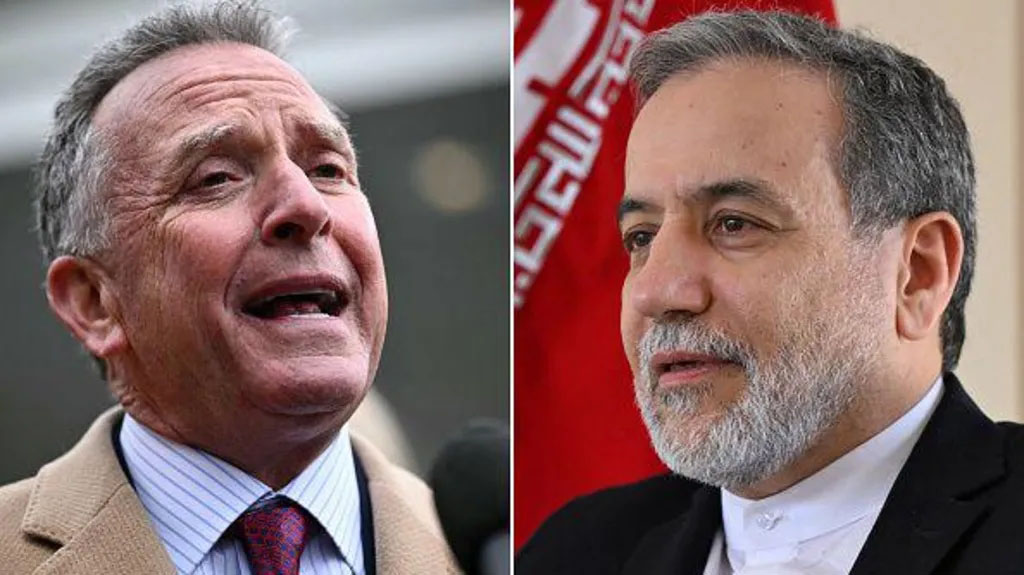
US, Iran hold ‘constructive’ first round of nuclear talks
Iran and the US have concluded a first round of talks in Oman over Tehran’s nuclear programme – the highest-level meeting between the two nations since 2018.
Both countries described the meeting as “constructive” and confirmed a second round of discussions will take place next week – with the US hailing the “direct communication” as being key to striking a possible deal.
President Donald Trump pulled the US out of a previous nuclear agreement between Iran and world powers in 2018, and has long said he would make a “better” deal.
The talks are seen as an important first step in establishing whether a deal can be done.
At two-and-a-half hours, the first meeting was brief, reportedly respectful – and set the stage for a second round.
That was probably as good as it could get when Iranian and US officials sat down in Muscat, the capital of Oman – whose top diplomat mediated the primarily indirect negotiations.
They were the most significant talks since Trump pulled the US out of the Iran nuclear deal of 2015 during his first term in office.
The verdict of Iran’s lead negotiator, Foreign Minister Abbas Araghchi, was positive.
“In my opinion, as the first meeting, it was a constructive meeting held in a very peaceful and respectful environment, because no inappropriate language was used,” he told Iranian state TV.
His diplomatic tone suggests the US team led by Trump’s envoy Steve Witkoff did not reiterate some of the president’s threats that Iran would face “great danger” if this dialogue did not succeed. He has repeatedly warned of possible military strikes.
READ ALSO:
- 2025 UTME: JAMB releases mock results
- Trump exempts smartphones, computers from new tariffs
- Gaza hospital hit by Israeli strike, Hamas-run health ministry says
This meeting ran with the delegations in separate rooms, relaying messages through Oman’s foreign minister, Badr bin Hamad al-Busaidi.
Witkoff, who is leading the US delegation, had previously only spoken of meeting face-to-face.
But Araghchi and Witkoff did speak for a few minutes in the presence of Busaidi – not the direct talks US officials said would happen but what could be a small but significant opening.
Iran, mindful of pressure from hardliners at home, underlined how limited their face-to-face exchange was, with no photographs taken.
In a statement following the talks, the White House said the discussions “were very positive and constructive”, noting that Witkoff had emphasised to Iran that he had instructions to resolve the adversaries’ “differences through dialogue and diplomacy, if that is possible”.
“These issues are very complicated, and special envoy Witkoff’s direct communication today was a step forward in achieving a mutually beneficial outcome,” the statement added.
Araghchi had said ahead of the discussions that his country wanted a “fair agreement”.
After the talks concluded, he said discussions next week may not happen in Oman, but would still be mediated by the Middle Eastern nation. The White House said they would take place next Saturday.
“Neither we, nor the other party, want fruitless negotiations, discussions for discussions’ sake, time wasting or talks that drag on forever,” Araghchi told Iranian state television.
The most important issue at stake is what kind of deal each side would be willing to accept.
Trump sent a letter to Iran’s supreme leader via the United Arab Emirates last month, saying he wanted a deal to prevent Iran from acquiring nuclear weapons and to avert possible military strikes by the US and Israel.
Iran hopes for a deal to limit, but not dismantle, its nuclear programme in exchange for sanctions relief.
An unnamed source in Oman told news agency Reuters that the talks would seek to de-escalate regional tensions and secure prisoner exchanges.
READ ALSO:
- Massilia Motors launches new Mitsubishi L200 with low fuel consumption, advanced engineering
- London mother sentenced to life in prison for drowning two sons
- LASRRA, LASDA to launch strategic documentation drive for Lagos diaspora database
Trump revealed the talks would take place during a visit by Benjamin Netanyahu to the White House on Monday. The Israeli prime minister said on Tuesday that both leaders had agreed that Iran “will not have nuclear weapons”.
Netanyahu has called for a “Libya-style deal”, referring to the north African nation completely dismantling its weapons programme in an agreement reached with Western powers in 2003. That would be completely unacceptable to Iran.
Iran insists its nuclear activities are entirely peaceful and that it will never seek to develop or acquire nuclear weapons.
Iranian officials have made it clear the negotiations will focus only on its nuclear programme, not its broader defence capability, such as its ballistic missile programme.
Ahead of the talks, Trump said on Friday that he wanted Iran “to be a wonderful, great, happy country – but they can’t have nuclear weapons”.
Trump has warned that the US would use military force if a deal was not reached, and Iran has repeatedly said it will not negotiate under pressure.
But this process is taking place under immense pressure.
Even as preparations were under way to arrange this first meeting, the US moved more warships and stealth bombers to the region and imposed more sanctions.
The US president told reporters in the Oval Office on Monday it would “be a very bad day for Iran” if the talks were unsuccessful.
Iran insists its nuclear activities are entirely peaceful and that it will never seek to develop or acquire nuclear weapons.
However, since Trump pulled out of the 2015 agreement – which expires later this year – Iran has increasingly breached restrictions imposed by the existing nuclear deal in retaliation for crippling US sanctions reinstated seven years ago, and has stockpiled enough highly-enriched uranium to make several bombs.
Under the terms of the 2015 deal, Iran agreed to only enrich uranium up to 3.67% purity for the next 15 years.
In February, the International Atomic Energy Agency (IAEA) nuclear watchdog reported that Tehran had stockpiled uranium enriched to 60% purity and could swiftly move to 90%, which would be weapons-grade.
The 2015 nuclear deal took nearly two years of intensive negotiations. At the start of this new effort to reach an agreement, Iran’s programme is far more developed and complex, and the wider region is far more volatile.
US, Iran hold ‘constructive’ first round of nuclear talks
BBC
International
Trump exempts smartphones, computers from new tariffs

Trump exempts smartphones, computers from new tariffs
US President Donald Trump’s administration has exempted smartphones, computers and some other electronic devices from “reciprocal” tariffs, including the 125% levies imposed on Chinese imports.
In a notice, US Customs and Border Patrol said that the goods would be excluded from Trump’s 10% global tariff on most countries and the much larger Chinese import tax.
It marks the first significant reprieve of any kind in Trump’s tariffs on China, with one trade analyst describing it as a “game-changer scenario”.
Late on Saturday, while travelling to Miami, Trump said he would give more details of the exemptions at the start of next week.
“We’ll be very specific,” he told reporters on Air Force One. “But we’re taking in a lot of money. As a country we’re taking in a lot of money.”
The move came after concerns from US tech companies that the price of gadgets could skyrocket, as many of them are made in China.
Exemptions – backdated to 5 April – also include other electronic devices and components, including semiconductors, solar cells and memory cards.
READ ALSO:
- Gaza hospital hit by Israeli strike, Hamas-run health ministry says
- Massilia Motors launches new Mitsubishi L200 with low fuel consumption, advanced engineering
- London mother sentenced to life in prison for drowning two sons
“This is the dream scenario for tech investors,” Dan Ives, who is the global head of technology research at Wedbush Securities, posted on X. “Smartphones, chips being excluded is a game-changer scenario when it comes to China tariffs.”
Big tech firms such as Apple, Nvidia, Microsoft and the broader tech industry can breathe a huge sigh of relief this weekend, he added.
The White House indicated the exemptions were made to ensure companies had more time to move production to the US.
“President Trump has made it clear America cannot rely on China to manufacture critical technologies such as semiconductors, chips, smartphones, and laptops,” White House Press Secretary Karoline Leavitt said in a statement.
“At the direction of the president, these companies are hustling to onshore their manufacturing in the United States as soon as possible.”
Trump, who is spending the weekend at his Florida home, told reporters on Friday he was comfortable with the high tariffs on China.
“And I think something positive is going to come out of that,” he said, touting his relationship with Chinese President Xi Jinping.
These electronic goods are still subject to the 20% tariff on China related to fentanyl, White House Deputy Chief of Staff on Policy Stephen Miller posted on X.
Some estimates suggested iPhone prices in the US could have as much as tripled if costs were passed on to consumers.
The US is a major market for iPhones, while Apple accounted for more than half of its smartphones sales last year, according to Counterpoint Research.
It says as much as 80% of Apple’s iPhones intended for US sale are made in China, with the remaining 20% made in India.
Like its fellow smartphone giant Samsung, Apple has been trying to diversify its supply chains to avoid an over-reliance on China in recent years.
India and Vietnam emerged as frontrunners for additional manufacturing hubs.
As the tariffs took effect, Apple reportedly looked to speed up and increase its production of India-produced devices in recent days.
Trump had planned for a host of steep tariffs on countries around the world to take effect this week.
But on Wednesday he announced he would implement a 90-day pause for countries hit by higher US tariffs – except China, whose tariffs he raised to 145%.
Trump said the tariff increase for China was because of the country’s readiness to retaliate with its own 84% levy on US goods.
In a dramatic change of policy, Trump said all countries that had not retaliated against US tariffs would receive the reprieve – and only face a blanket tariff of 10% – until July.
The White House then said the move was a negotiating tactic to extract more favourable trade terms from other countries.
Trump has said his import taxes will address unfairness in the global trading system, as well as bring jobs and factories back to the US.
Trump exempts smartphones, computers from new tariffs
BBC
International
Gaza hospital hit by Israeli strike, Hamas-run health ministry says
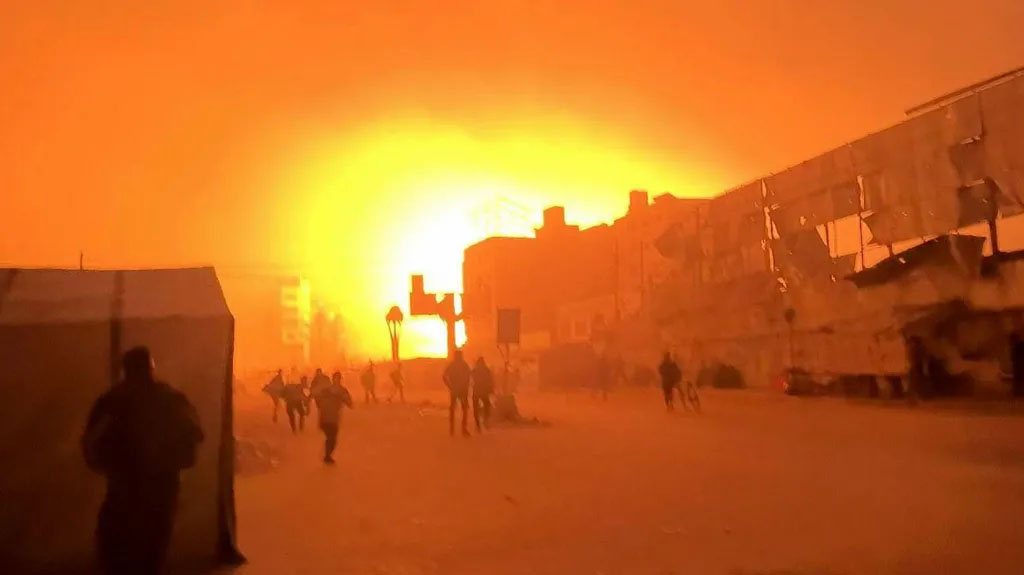
Gaza hospital hit by Israeli strike, Hamas-run health ministry says
An Israeli air strike has destroyed part of a hospital in Gaza City, the territory’s Hamas-run health ministry has said.
Witnesses said the strike destroyed the intensive care and surgery departments of Al-Ahli Baptist Hospital, the main medical facility in Gaza City.
Video posted online appeared to show huge flames and smoke rising from the hospital after missiles hit a two-storey building. People, including some patients still in hospital beds, were filmed rushing away from the site.
Israel said it was looking into reports of the strike. No casualties were reported, according to the civil emergency service.
The health ministry said the building was “completely destroyed”, leading to the “forced displacement of patients and hospital staff”.
A local journalist, who was working at the hospital, said the Israel Defense Forces (IDF) had phoned a doctor who was operating in the emergency department and asked them to evacuate the hospital immediately.
“All patients and displaced people must go out to a safe distance,” the officer reportedly said.
READ ALSO:
- Massilia Motors launches new Mitsubishi L200 with low fuel consumption, advanced engineering
- London mother sentenced to life in prison for drowning two sons
- LASRRA, LASDA to launch strategic documentation drive for Lagos diaspora database
“You have only 20 minutes to leave.”
Footage on social media showed staff and patients leaving the building while it was still dark outside.
Dozens of Palestinians, including women and children, were also seen fleeing from a courtyard inside the hospital where they had been seeking shelter.
Al-Ahli – a small medical facility before the war – is now the only hospital still functioning in Gaza City following the destruction of Al-Shifa medical complex and hospitals in the northern part of the Strip.
In its statement, the Hamas-run government media office condemned the attack.
Israel “is committing a horrific crime by targeting Al-Ahli Hospital, which houses hundreds of patients and medical staff”, it said.
In October 2023, an attack on the same hospital killed hundreds of people.
Palestinian officials blamed an Israeli strike for the blast. Israel said the blast was caused by a failed rocket launch by the Palestinian Islamic Jihad militant group, which denied responsibility.
The Israeli military launched a campaign to destroy Hamas in response to an unprecedented cross-border attack on 7 October 2023, in which about 1,200 Israelis were killed and 251 others were taken hostage.
More than 50,933 people have been killed in Gaza since then, according to the territory’s Hamas-run health ministry.
Of those, 1,563 have been killed since 18 March, when Israel restarted its offensive in the Gaza Strip, the ministry said.
Gaza hospital hit by Israeli strike, Hamas-run health ministry says
BBC
-

 metro2 days ago
metro2 days agoKidnapping: Our lives are hanging by a thread, residents of Igbogbo-Baiyeku communities in Lagos cry out
-

 International3 days ago
International3 days agoUS announces new visa requirements for Nigerian applicants
-

 International2 days ago
International2 days agoUS embassy announces new visa interview requirements for Nigerian applicants
-

 Sports2 days ago
Sports2 days agoBreaking: Former Super Eagles coach Christian Chukwu passes away at 74
-

 Sports3 days ago
Sports3 days agoCristiano Ronaldo ventures into movie industry, unveils new studio
-
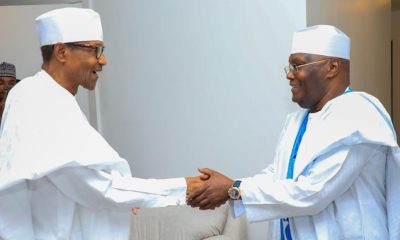
 Politics2 days ago
Politics2 days agoAtiku leads Tambuwal, El-Rufai, others to Buhari as 2027 election draws near
-

 metro2 days ago
metro2 days agoIbadan Pastor ends 30-year-marriage over sex dispute with wife
-

 metro2 days ago
metro2 days agoKemi Olunloyo angry, disowns family after father’s death

